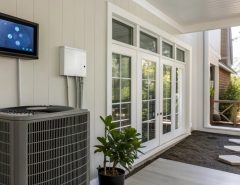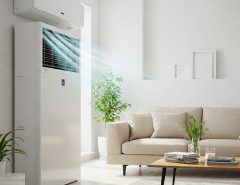Homeowners in Canada depend on their heating and air conditioning systems to keep the household comfortable and the air quality healthy and safe. A priority is maintaining the HVAC equipment for optimum efficiency and replacing parts that become worn, causing poor operation.
Trusted, credentialed heating and air conditioning technicians are responsible for repairs and installations of a furnace and AC equipment. You can learn more from sites like https://nationheating.ca/ about repairs and installations.
When there’s a malfunction or a system shutdown, reliable teams like these can make the necessary repairs or properly install an adequate-sized, updated model suited for a specific household’s needs. These experts can also offer tips on troubleshooting to recognize issues before reaching out for a service call.

Consider these suggestions when you have a problem with your unit. You might be able to point your HVAC provider in the direction of the issue faster.
Can You Identify The Problem Happening With Your Heating & Air Conditioning
As a homeowner, a method for keeping the heating and air conditioning functional and efficient for an extended life span is to enlist the services of credentialed HVAC technicians when the equipment becomes inefficient, or the parts become worn and fail.
The experts can make the necessary corrections or install a replacement when the time comes. The furnace and AC contractor can also provide directives on simple troubleshooting techniques that could resolve the issues without the need to make a service call.
Some problems will have a relatively straightforward fix. Let’s look at some common HVAC issues techs run into that homeowners could resolve in a few quick steps.
● Is your system powered on
If your system doesn’t appear to be functioning, one of the primary steps is to see if the power switch is in the “on” position. The switch should be checked on the equipment inside and outside.
It might seem like an obvious thing that you wouldn’t overlook, but it’s something that can happen if power is tripped for some reason. When you switch the unit back on, and nothing happens, the circuit breaker should be checked to see if there was a trip.
When you flip it and turn the system back on, but it trips again, you should reach out to the service provider. There could be an electrical issue.
● Cleanliness is critical with the system
Before the extreme winter and summer seasons, the HVAC equipment should be cleaned to function at an optimum efficiency level.
Usually, in the spring and fall, the heating and air conditioning technicians will do a tune-up, preventive maintenance on the system, including cleaning and optimizing it for the next season.
You can engage in standard care and upkeep tasks between service calls to maintain cleanliness. These include the following:
- Vent/register cleaning
- Wipe/dust the surrounding area
- Switch out/clean filters
Canada’s preventive HVAC maintenance experts will use their skill set and professional tools to inspect parts and replace them if worn or broken and thoroughly check for defects or damages to make corrections to avoid the potential for major issues developing down the road.
● Leaking ducts need to be repaired
The system’s ducts are responsible for moving fresh air-conditioned air throughout the different spaces within the household. These ducts need to be inspected periodically to ensure the joints haven’t become worn out; there are no holes or damages, so these can be immediately fixed.
When these defects are neglected, a duct left to leak can create energy inefficiency raising utility costs considerably. Some professionals clean and inspect ducts making corrections as they go.
This process should be done every few years, particularly if you don’t feel comfortable handling the repairs personally.

Photo by Erik Mclean on Unsplash
● Switch to a Smart thermostat (programmable)
Many HVAC technicians recommend homeowners switch to a programmable thermostat to gain greater control over the unit’s temperature and help to gauge how it maintains it.
These require their own service and maintenance since a nonfunctional or damaged device will create airflow irregularities. In the same vein as preventive maintenance, the thermostat should be checked routinely.
● Change out your air filters on a regular schedule
The air filters on the heating or furnace and air conditioning systems must be changed or cleaned on a regimented schedule.
The household location, whether there is a lot of dust in the area or pollen, pets in the home, or respiratory-compromised family members, will determine how frequently the filters need to be changed.
The objective is to avoid clogging, making the system left efficient and the air quality poor. In an everyday situation, the recommendation is roughly every 90 days. Still, it would be necessary to decrease that to as soon as every 30 days or less if there are extenuating circumstances.
The manufacturer’s manual will advise the adequate filter for the model, as can the HVAC repair and installation contractor working to provide preventive maintenance for the system. Visit here for a guide on care and upkeep for a home’s heating and cooling system.
Final Thought
In benefiting heating and air conditioning in the household, a primary component is enlisting the services of a credentialed, skilled, and reliable installation and repair technician. These are intricate systems that require experience and extensive knowledge to maintain adequately.
While there are simple tasks you can do as a homeowner to troubleshoot or improve care and upkeep in between tune-up calls, having the technician available when these techniques are ineffective is critical.
You might need a few corrections to get back up and running, or it might be necessary to replace a system at the end of its rope. A professional can help you select an upgrade that suits your specific needs and fits your home adequately, so the operation is efficient for each space in the household.
Contact the professionals for your preventive maintenance tune-ups, repairs, and installation, or if you want a second opinion on your troubleshooting efforts when you don’t feel entirely comfortable making the judgment call.




